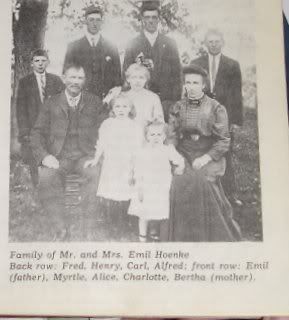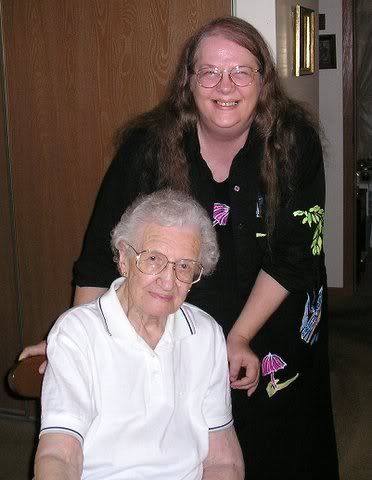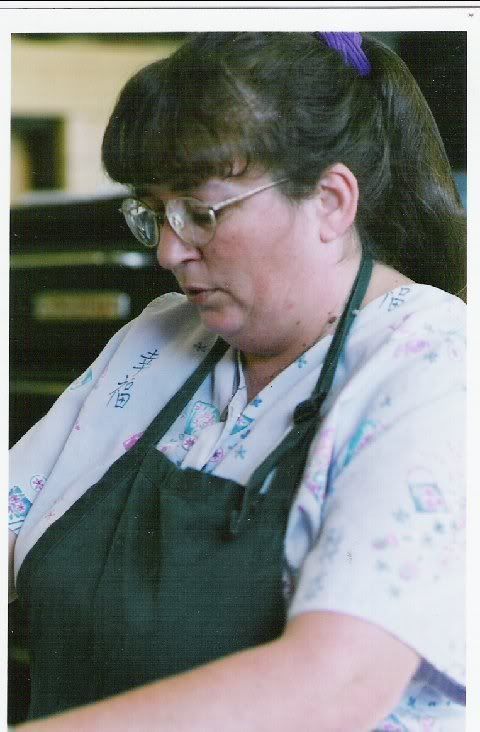Ok ... Little neurotic - obsessed today, but working our way through it (Most of this post rough draft)
Good Mornin. I’m a little frustrated because my computer went down and rebooted overnight due to a Microsoft update, and I hadn’t yet posted my day’s worth of work on the blog … and now its gone … didn’t open up when we opened Word. May silly … was just too tired last night to think straight, but it was like 14 pages long last time I had noted and it had been growing. Just soo disappointed. Fortunately, I had gazuplifly triple saved the paper … so that’s ok, but man-o-man … Feel such a loss when that happens. A whole day of my life … just missing.Ok, ok … nothing to do … fresh coffee. A bowl of cereal … some left over strawberries … awe you will never know that will all remain a mystery. Ok, well sure from our sweetie … ok, maybe I’m not such a mystery. But, it was a fine night nonetheless … bread, cheese, strawberries, whip cream, and a margarita.
Hmm just remembered dream from last night … My immediate supervisor from my last job took over Sr’s position and I was demoted to co-teaching a new group of people that had come over from the conglomeration of several agencies. The cases we’re tougher. A big part had been setting up my office and desk, to only see it disappear to a bevy of desks for the students. The lady who does group 4 was teaching language or spelling or something on the board and I remember thinking they are not going to be able to understand that. It goes on … oh I remember something about taking a picture of ashes on some of the computer desks thinking it was careless maintenance, then I thought it was this teacher’s who would never smoke, then I realized later it was probably my ashes. And, then later I had been going from one building to another with Sr. she went on ahead of me so I could finish up my smoke … even though we’re coming up to 7 months. I think its going to haunt us for a long while.
Ahh sweetie pie is on line. I wonder if he is going to say hi … it’s kind of late for me … but he’s about on schedule. He’ll probably want us to take a shower though and we’ll probably say no … and it will go one from there. We just took our medicine … been fooling around reading news and emails and such … listening to Josh Groban. Not sure of that choice, but we’ll let it be for a while. Got a full set ahead of us. We got dressed too so we could get some light in here … we turned on a light and opened one set of curtains. It has to be a productive day today … damn ok, we’re not going to go backward.
Man … not lining up here … took a bit to get the computer stabilized – 10-15 minutes. She’s ok … think we tried to do too much at once added to AOL spasms. Anyway … we did talk to our sweetie pie in IM for about 40 minutes. His daughter is going through a crisis. We want him to go down and help her … but he’s thinking it’s ok just to tell her what to do that the daughter is strong, but we figure the daughter is going through emotional upheaval and there are safety concerns so we want the more dramatic move. But, we acknowledge also that this is Sweeties daughter and not ours. Just that he doesn’t have our advantage going through a bad breakup where safety was a concern. I also know our friend can minimalized stuff when he’s got too much to be dealing with … just this isn’t the time for him to be setting up educational lessons. She is going to need a furniture mover and washcloth buyer. Ok, that’s enough you … we’ve already put more than our two-cents into it. Just don’t trust the daughter’s ex-partner.
SHHHHH….
Start School work …
Ok, ok .. we gotta move on. Sweetie wants not to worry over us which means getting school done. We’d just looked over there before we were talking to him. Probably a good idea for us to look again. It seems like each time we have to write a paper, we are trying to figure out how to do it.
Let’s see we read the chapter, we read the article. We need to:
1. Incorporate Latane and Darley article on group intervention and bystander intervention into discussion response.
2. Consider factors that determine whether bystanders help in emergencies?
3. Consider how to increase the likelihood of people being helpful to others in need?
Ok, that doesn’t look too bad … simple just gotta do it. First comes first.
We’re going to look for factors where bystanders help … hmm text full of ideas
a) Being a genetic relative (p. 353)
b) Having had cooperative breeding (p. 353)
c) Having a situation that is life and death (p. 354)
d) That the person needing help is younger (p. 354)
e) By helping someone else they are likely to help you (p. 354)
f) In a situation where the person needing help isn’t selfish (p. 355)
g) When so doing will “preserve a norm that helps everyone (p. 356)
h) If one were injured or sick (p. 356)
i) When a group of people face an external threat (p. 356)
j) When we might be rewarded and the cost not be too high (p. 356)
k) When a positive (feeling good) sense of self-esteem is threatened (p. 357)
l) Under the situation of releasing depression (p. 358)
m) If the individual thought it the right thing to do – moral principal (p. 358)
n) In giving out the image of “appearing” to be moral (p. 358)
o) If the individual wanted to be a hero (p. 359)
Brehm, S. S., Kassin, S., & Fein, S., (2005). Social psychology [6th ed.]. Boston: Houghton Mifflin Company.
Ok, what do we need to pick out of the extra reading?
“The Ss were less likely to report the smoke when in the presence of passive others 10%) or in groups of 3 (38% of groups) than when alone (75%)” (p. 147).
“And he must deal with it under conditions of urgency, uncertainty, stress, and fear” (p. 147).
“The mere perception that other people are also witnessing the eent will markedly decrease the likelihood that an individual will intervene in an emergency” (p. 147).
This is due to diffusion of responsibility. “If an individual is alone when he notices an emergency, he is solely responsible for coping with it. If he believes others are also present, he may feel that his own responsibility for taking action is lessened, making him less likely to help” (p. 148).
“Most emergencies are, or at least begin as, ambiguous events” (p. 148).
“First define the event as an emergency and decide that intervention is the proper course of action” (p. 148).
“Being exposed to public view may constrain an individual’s actions as he attempts to avoid possible ridicule and embarrassment” (p. 148).
“A crowd can cause contagion of panic, leading each person in the crowd to overreact to an emergency to the detriment of everyone’s welfare” (p. 149).
1) Notice the event (p. 152)
a. Interpret it as an emergency
b. Decide to take personal responsibility
i. Stay or
ii. Leave
2) Fail to
a. notice the event
b. interpret it as an emergency
c. assume responsibility
“Togetherness reduces fear, even in situations where it does not reduce danger. In addition, subjects may have felt that the presence of others increased their ability to cope with fire” (p. 152).
“Bravery and stoicism in the face of danger or discomfort is a socially desirable trait(as it appears to be for American male undergraduates)” (p. 152).
“Taken together, these two studies suggest that the presence of bystanders may affect an individual in several ways; including both ‘social influence” and “diffusion of responsibility” (p. 152).
“Individuals are less likely to engage in socially responsibility action if they think other bystanders are present” (p. 153).
Fein, S. & Kassin, S. (2005). Readings in social psychology: The art and science of research [3rd ed.]. Boston: Houghton Mifflin Company.
Stop school work ….
Ok just stopping by her for a moment. We are collecting ourselves … we’d gotten the top two resources checked out and were working on the third (like to have at least 5), but we’d gotten a call from our oldest son … that was a pretty big deal. We aren’t going to go into the details … trying not to talk about our children, but he talked in general about our youngest son’s kick-boxing fight last night. He didn’t win, but it’s ok, because it was his first fight. The person he was supposed to fight against called off 6 hours before the fight … and there was one other guy whose competition called it off 2 hours before the fight … so our son fought against this other guy, but the guy was 50 pounds bigger than him, carrying 3 inches more in height, and with more experience. Our oldest son did figure out the camera and is supposed to have the whole thing … about 7 ½ minutes. So, we’re hoping they give us permission to open a blog with it … he’s going to try and figure out how to send it via email. I’ve got to get permissions all around to have it posted on the Internet though. It would be a good place for people to find and comment on it. I worry a little though because I don’t know if people would then have access to our blog … have to check that part out. I would still like to get it up where I could study it.
Our son explained some of the things we’re not going to go into detail here … though they cause me to worry. Our ex and I are in agreement before he does this again … he should really have insurance. Just too much risk. He might need to go into a more standard job with some kind of benefits. I think now days that’s the best way to get insurance. I’ve been told there might be a black eye, bruises, a rug burn, and a strained ankle. Shoot … ok, we’re not going to do more than that … need to not worry … a first fight is just what it is a first fight.
Ok, Missy in place … let’s be moving on … Seems we get so far and need to slow down. I would like for one more notation like to talk to our youngest son. See what he has to say. That be a mother’s prerogative. Schoooooooooolll????!!!
Ok, ok … getting there.
Might have to reload the library. Better get going.
Ok … back we just finished collecting our resources it’s now 12:10 … we had crackers and such at 10 am so we’re ok on the lunch score. Now we have to organize the data and write the report … let’s try to do all that by 2 pm. That be a good goal right? Then take a break and write the next paper. I want two done today and two tomorrow. Let’s get caught up k?
Start Schoolwork ...
In one study dogs were studied to see if they recognized an emergency either by the owner of the dog feigning a heart attack or being held under by a fallen bookcase (Macpherson & Roberts, 2006, p. 113).
In both situations the dogs failed to get help from a bystander though they stayed closer to the owner (p. 118-119), which seemed to be interpreted as the dogs had not recognized that the emergency was an emergency.
It was argued that the acted out emergency might not have been real enough though humans in similar test circumstances took the role play to be real (p. 119).
Macpherson, K. & Roberts, W. A. (2006). Do dogs (canis familiaris) seek help in an emergency? Journal of Comparative Psychology, 120(2), 113-119. Retrieved February 18, 2007, from PsycARTICLES data base.
One study looked at sex differences to see if gender affected help given to someone (role-playing) choking. The participants were scored on a sex-role inventory to assert masculine, feminine, or androgynous ratings. The results state that males helped more, particularly if masculine, more help was given in a situation where the subject was alone with the victim and androgynous subjects were less likely than masculine to help, but more likely than traditionally feminine subjects. They also found that instrumental ability - knowledge of actual emergency procedures was a significant factor in giving assistance (p. 916).
"Behavioral evidence [suggests] that androgynous subjects do not rigidly follow sex-role norms whereas sex-typed subjects tend to do so" (p. 918).
"Results suggest a negative relation between femininity and helping in an emergency. In retrospect, it seems most reasonable to speculate that instrumentality may be the key variable in helping during the emergency proper but that expressivity may be the most important for the care giving required after the emergency is over" (p. 924).
Senneker, P. & Hendrick, C. (1983). Androgyny and helping behavior. Journal of Personality and social psychology, 45(4), 916-925. Retrieved February 18, 2007, from PsycArticles data base.
As a result of the Kitty Genovese study, a study took place to study violent crime, specifically of male Israeli students, which showed diffusion of responsibility[mutually unaware bystanders to an emergency help less than lone bystanders], negative social influence[bystanders help less when they are aware that another bystander is unresponsive than when they are unaware of the other bystander's reactions] , but was increased by evaluation apprehension [bystanders help more when other bystanders present are aware of their reaction than when their reactions are unknown to the other bystanders] (p. 1188). [brackets p. 1190).
"Intervention in violent crime is likely to be viewed as more dangerous, especially when the attacker is still present, when expected and unpredictable involvement with authorities (e.g., police, courts) is possible, or when fear of becoming the next victim may induce particularly strong emotional stress, and when violence-precipitated need may be perceived as especially vivid or immediate" (p. 1188)
"The process of social influence requires that the focal bystander be aware of the reactions of other bystanders. The reactions of others provide informational cues about the seriousness and reality of the emergency and normative cues about appropriateness of responses" (p. 1188).
"The process that Latane and Darley (1970) labeled audience inhibition requires that focal bystanders believe others are aware of their responses. It refers to the bystanders' concern over others' expectations and evaluations of their behavior and the desire to optimize these evaluations. This process might preferably be called evaluation apprehension to avoid any directional connotation" (p. 1189).
"Assuming that bystanders project their own expectations to others, they are likely to view intervention as the response socially expected of them, so that evaluation apprehension should promote helping" (p. 1189).
" a) The absence of an audience produced a sense of detachment from events that lowered the emotional impact of the emergency and its power to activate norms. b) The presence of an audience made the personal sense of obligation more salient, perhaps through heightening objective self-awareness (Duval & Wicklund, 1972). c) The presence of an audience added the force of perceived social expectations to that of self-expectations" (p. 1197).
"This finding contrasts with the results of two earlier studies (Latane 7 Darley, 1976; Beaman et al., Note 1) in which the presence of an audience I combination with negative social influence reduced helping" (p. 1197).
"Assuming that the timing of intervention reflects the timing of decisions, however our findings support the generally accepted view (cf. Latane & Darley, 1970; Schwartz, 1970) that the first issue confronting a bystander is to decide upon the reality of need and appropriateness of help, a decision partly based upon the situational definition provided by others (social influence). Following this comes a decision regarding one's own personal obligation, which may be reduced by the presence of others (diffusion of responsibility) and may be influenced by their perceived expectations (evaluation apprehension). The latter, we note, may enhance the sense of personal obligation" (p. 1198).
Schwartz, S. H. & Gottlieb, A. (1976). Bystander reactions to violent theft: Crime in Jerusalem. Journal of personality and Social Psychology, 34(6), 1188-1199. Retrieved February 18, 2007, from PsycARTICLES data base.
Start Paper ...
In the consideration of factors that might determine whether bystanders offer help, we note that Brehm, Kassin, & Fein (2005) offer many. We will work through each of them in turn, but first we chose to list many offered by the authors. A person might help another more by the factors of:
a. Being a genetic relative (p. 353)
b. Having had cooperative breeding (p. 353)
c. Having a situation that is life and death (p. 354)
d. Seeing the person as younger (p. 354)
e. Helping someone else who is likely to help back (p. 354)
f. Not being selfish (p. 355)
g. Preserving the norm to help (p. 356)
h. The other being injured or sick (p. 356)
i. An external threat – such as a tsunami (p. 356)
j. Being rewarded where the cost is not too high (p. 356)
k. Needing to feel good (self-esteem) is threatened (p. 357)
l. Releasing depression (p. 358)
m. Being the morally right thing to do (p. 358)
n. Needing to present the image of being moral (p. 358)
o. The individual’s hero concepts (p. 359)
Schoolwork to be continued ...
















